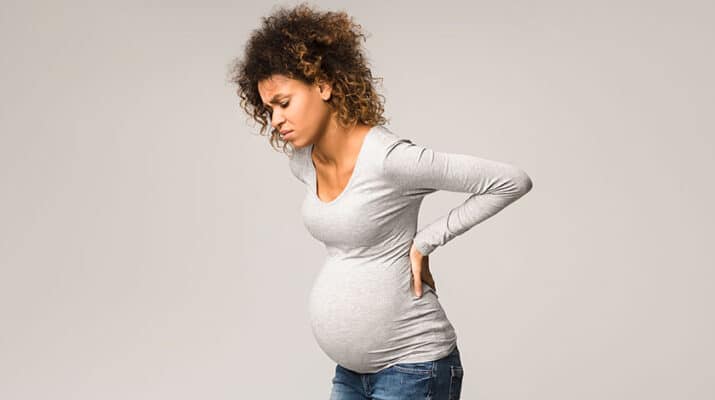Experts offer tips for a more comfortable pregnancy
By Deborah Jeanne Sergeant
Pregnancy can certainly do a number on a woman’s back, both from the extra weight gain—much of it concentrated in the belly—and also postpartum hunching to nurse. Plus, joints naturally loosen up during pregnancy to allow for easier birth.
Moms can easily mitigate some of these effects.
Ideally, women should plan to become pregnant. Part of that should include developing a level of pre-pregnancy fitness.
“Like anything else, it is about diet and exercise,” said physician J’Leise Sosa from General Physician Women’s Health in Buffalo. “Engaging in regular exercise prior to pregnancy is so crucial. You’re conditioning and strengthening your body for the big changes that will occur.”
She recommended 30 minutes of cardiovascular exercise and strength training five days a week or 50 minutes three days a week. With each workout, stretching 10 to 20 minutes before and after is also important.
Sosa also advised avoiding excessive weight gain, as that can worsen back pain and cause complications with pregnancy.
As moms gain more weight up front, they tend to try to compensate by arching their backs for better balance. Jessica Burke, certified through DONA as a post-partum doula and owner of Birth Grove Doula in Buffalo, said that yoga and stretching can help. A pregnancy support belt or kinesiology tape can also transfer the effect of the weight to elsewhere in the body.
“A lot of times when a mom has back pain, it’s when the baby’s head is pushing against the backbone,” Burke said. “What I tell a lot of my clients is you can take a tennis ball to your sciatic nerve. Lie down and roll back and forth gently on the ball for a little while.”
Slouching may feel comfortable to ease a painful back; however, not hunching over can help fight prevent pain.
“Be aware of posture in the prenatal and postpartum period,” Burke said. “The crux of it after birth is to engage in those exercises to strengthen and recondition those muscles that were stretched to their limits in pregnancy.”
Modalities like prenatal yoga, chiropractic and pregnancy massage can help, as can floating in a pool. However hot tubs are off-limits because of the heat.
It is OK to apply ice to the back to relieve pain.
Many women in the latter stages of pregnancy find that pregnancy pillows and body pillows can support the belly and knees while lying down in the safest pregnancy sleeping position, the side.
According to the American Pregnancy Association, “it provides the best circulation for you and your baby. It also places the least pressure on your veins and internal organs. Sleeping on your left side will increase the amount of blood and nutrients that reach the placenta and your baby. Plus, good circulation helps reduce potential swelling, varicose veins in your legs and hemorrhoids.”
Sleeping on the side can be hard for back or stomach sleepers to comfortably achieve without support pillows.
After the birth, losing weight right away can help relieve lingering back pain and help support the mom’s overall health.
While the belly may reduce, the breasts enlarge after birthing. To help compensate wear a well-fitted, supportive nursing bra.
Ergonomics also matter while nursing. Lisa Jane Jacobsen, an OB-GYN with University at Buffalo, advises new moms to “Maintain good posture during breastfeeding. Always make sure you are well positioned, bringing the baby to you instead of your body to the baby.”
Jacobsen is also an associate dean of curriculum for the Jacobs School and vice chairwoman of education for the OB-GYN department.
“You may need an appropriate cushion, the semicircular pillow to rest the baby on,” Jacobson said.
Boppy brand nursing pillow is one example.
How moms hold the baby during nursing sessions offers another means of making breastfeeding more comfortable.
“The ‘football hold’ brings the baby along the side under the breast,” Jacobson said. “You’re hoping to breastfeed for months to come. You want a position that will allow you to keep breastfeeding and not injure yourself.”

